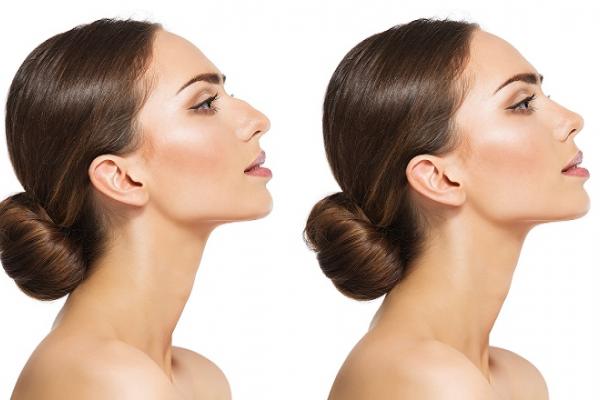The Beauty Perception Created by Social Media Has Lowered Aesthetic Age, Be Cautious of Procedures Performed by Non-Experts!
The widespread use of social media also shapes societal beauty perceptions. Plastic, Reconstructive, and Aesthetic Surgeon Dr. Assoc. Prof. Mert Ersan, who mentions the desire for many aesthetic procedures, especially rhinoplasty, to be performed at an early age with the changing perception, issued important warnings on the subject. He particularly emphasized the importance of these procedures being performed by qualified professionals.
The images shared by social media influencers and celebrities, along with the filters they use, have notably transformed societal beauty perceptions. Dr. Assoc. Prof. Mert Ersan, a Plastic, Reconstructive, and Aesthetic Surgeon at Yeditepe University Kozyatağı Hospital, stated that as a result, social media and societal beauty perceptions play a significant role in shaping today's aesthetic trends. Emphasizing the importance of individuals recognizing their own beauty rather than imitating an organ of a celebrity or someone they admire, Dr. Assoc. Prof. Ersan pointed out that everyone's facial structure is unique, and aesthetic procedures should be personalized accordingly.
“Aesthetic Surgical Procedures Should Be Performed by Expert Hands”
Dr. Assoc. Prof. Mert Ersan observes that, especially in the last 5-6 years, the increase in aesthetic procedures has led many people to view it as a source of income. However, procedures performed by unqualified individuals can lead to various complications.
"Dr. Assoc. Prof. Ersan, stating that legally, the only branch in medicine that includes the word 'aesthetic' is plastic reconstructive and aesthetic surgery, warned about the potential undesirable outcomes of aesthetic interventions performed by non-experts. Dr. Assoc. Prof. Ersan continued his words as follows:
“We have significantly improved ourselves through both our assistantship training and the cases we have encountered. Being able to do a job does not necessarily mean you can do it well. In cases where we encounter underground practices, we exert great effort to re-treat the patient. Nowadays, not only non-surgical procedures like fillers and botox are performed. Unfortunately, even surgical procedures are carried out by unqualified hands. Procedures of this nature should be performed by physicians who are well-versed in skin and subcutaneous anatomy, capable of delving deep into the subject, possessing both theoretical and practical experience, and able to manage complications they encounter. This is crucial for both us and public health."
“Early Aesthetic Age is Higher in Girls”
"Dr. Assoc. Prof. Mert Ersan, stating that they are confronted with the fact that the aesthetic age has decreased at early ages, emphasized that girls, especially, are more influenced by societal beauty perceptions. Ersan said, "Societal beauty perception, factors like social media have a greater impact on girls. Especially after adolescence, girls start to pay more attention to their appearance."
“Rhinoplasty Should Be Avoided Before Facial Development is Complete at Early Ages”
"Dr. Assoc. Prof. Mert Ersan, explaining that nose surgeries are among the most commonly preferred surgeries at an early age, pointed out that certain parameters need to be carefully evaluated. Dr. Assoc. Prof. Ersan continued his words as follows: "Interventions performed at an early age before facial development is complete can harm the development of other parts of the face. This can lead to functional, physical, and visual problems in the future. Therefore, we do not recommend rhinoplasty before facial development is complete, especially before the age of 18."
“In Aesthetic Surgeries, Proper Communication with the Patient is Crucial”
"Dr. Assoc. Prof. Ersan, emphasizing the importance of being in proper communication with the candidate for this procedure and ensuring that the patient understands the entire process, continued his words as follows: "Unfortunately, these young individuals think that an hour after the surgery, they will continue their lives with a much more beautiful nose, which is certainly not the case. Therefore, it is necessary to establish the right communication with the patient and make sure that they understand the process very well. Questions such as whether the patient truly understands the entire process, what they need to do before and after the surgery, what kind of surgical process awaits them, whether the patient's psychology is at a level to endure this operation, and what changes the patient expects in their life with their new nose after the surgery need to be addressed in a common ground."
“In Rhinoplasty, Functionality Should Not Be Sacrificed Solely for Visual Gains”
"Dr. Assoc. Prof. Mert Ersan, stating, “For us to call an organ aesthetic, it needs to function well functionally. Therefore, for us, an aesthetically pleasing nose is one that can breathe beautifully,” emphasized, “We should not sacrifice functionality solely for visual gains. Therefore, we first evaluate whether the patient has any breathing problems. This is done very seriously through physical examination and also through some imaging methods, such as camera systems like endoscopes, to assess whether the patient has any breathing problems.”
Is Every Nose Suitable for Every Patient?
Dr. Assoc. Prof. Mert Ersan, emphasizing that everyone's facial structure is unique and that personalized planning is essential in aesthetic surgeries, stated, "In addition to this, determining which nose is suitable for which patient is another crucial aspect. Since everyone's facial structure is different, not every nose is suitable for every patient. Understanding the patient's expectations is particularly important for us. We evaluate situations that cause discomfort for the patient and assess how realistic their expectations are," he explained.
“Three-Dimensional Imaging Programs Provide Insights into the Expected Results”
Dr. Assoc. Prof. Mert Ersan, stating that the subsequent process for patients who decide to undergo surgery is evaluated through three-dimensional images and that they proceed accordingly, continued his words as follows: "We use different methods to understand the patient's desired outcome and whether their expectations are realistic. For example, we ask them to bring photos of noses they like and dislike, and we evaluate based on these. We explain that everyone's cartilage, skin, and bone structure are different, and therefore, expectations should align with this. At this point, we use three-dimensional imaging programs. By taking photos of the patient from different angles and uploading them to the system, we create a three-dimensional image. We make some changes to this imaging to preview the potential outcome. Of course, while the obtained image may not provide a definitive result, it gives an idea of the potential outcome."
”


